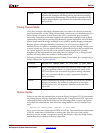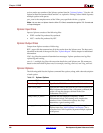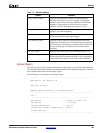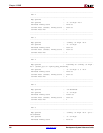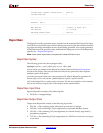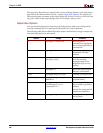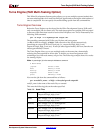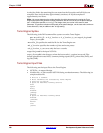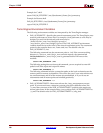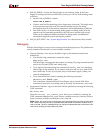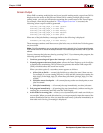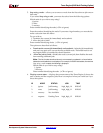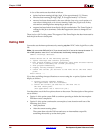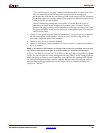
Development System Reference Guide www.xilinx.com 189
Turns Engine (PAR Multi-Tasking Option)
R
Turns Engine Output Files
The naming convention for the NCD file, which may contain placement and routing
information in varying degrees of completion, is placer_level_router_level_cost_table.ncd.
If any of these elements are not used, they are represented by an x. For example, for the first
design file run with the options –n 5 –t 16 –rl std –pl high, the NCD output file name would
be high_std_16.ncd. The second file would be named high_std_17.ncd. For the first design
file being run with the options –n 5 –t 16 –r –pl high, the NCD output file name would be
high_x_16.ncd. The second file would be named high_x_17.ncd.
Limitations
The following limitations apply to the Turns Engine.
• The Turns Engine can operate only on Xilinx FPGA families. It cannot operate on
CPLDs.
• Each run targets the same part, and uses the same algorithms and options. Only the
starting point, or the cost table entry, is varied.
System Requirements
To use the Turns Engine, all of the nodes named in the nodelist must be able to access a
common directory, most likely through a network-accessible file system.
If needed, one of the files in this directory can be used to set any environment variables that
are needed to run PAR (e.g., XILINX, PATH, LD_LIBRARY_PATH). This can be
accomplished as follows:
Create a file with a fixed path that can be accessed by all of the systems you are using. This
file might be named something like:
/net/${nodename}/home/jim/parmsetup
In this file, add whatever lines are needed to set up environment variables that are needed
to run PAR. This file will be interpreted by /bin/sh (Bourne shell) on each target node
before starting PAR, so environment variables must be set using Bourne shell conventions.
When running in a Solaris environment, the contents of this file might look like:
XILINX=/net/${nodename}/home/jim/xilinx
export XILINX
PATH=$XILINX/bin/sol:/usr/bin:/usr/sbin
export PATH
LD_LIBRARY_PATH=$XILINX/bin/sol
export LD_LIBRARY_PATH
For environments that mix different kinds of nodes (e.g., Solaris and Linux), a more
sophisticated script might be needed to set up the proper environment.
After creating this file, set the environment variable PAR_M_SETUPFILE to the name of
your file, as shown in the following examples.



